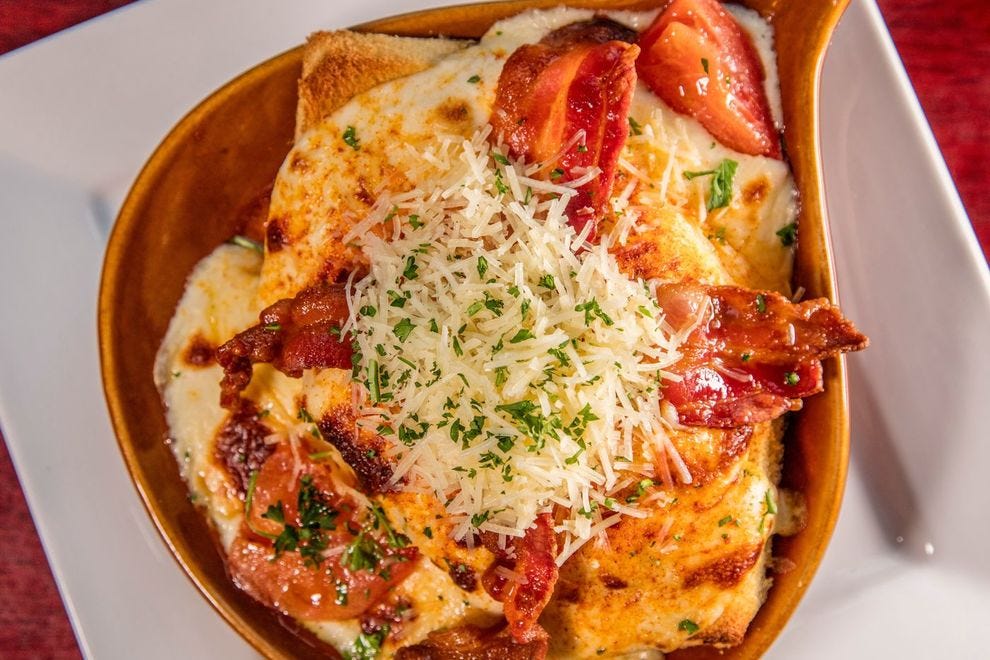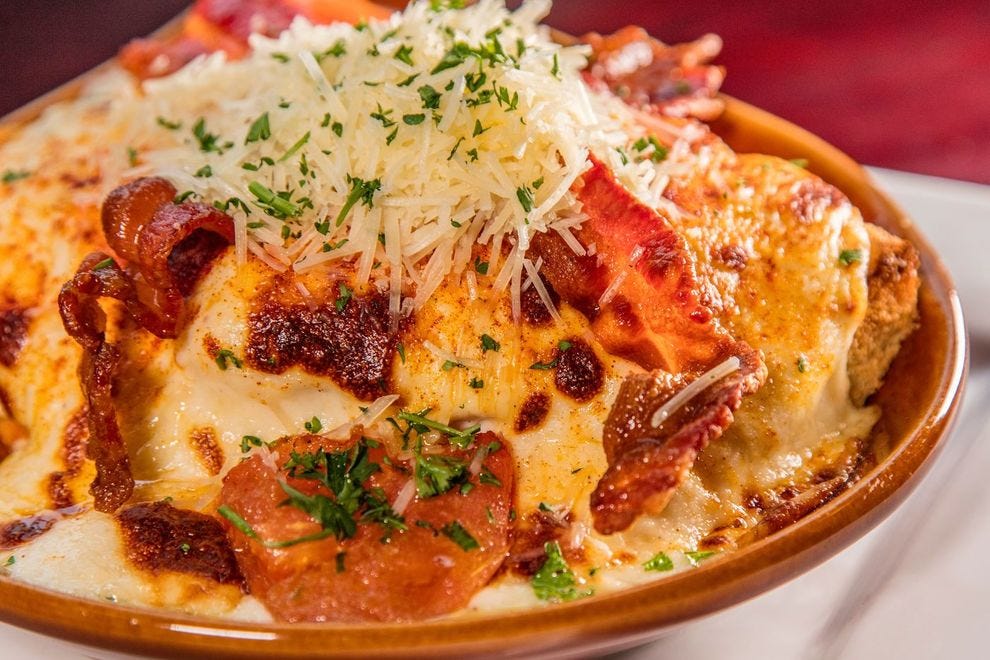What it is and best places to try one
 Hot Brown from its birthplace, the Brown Hotel — Photo courtesy of The Brown Hotel & Chris Witzke
Hot Brown from its birthplace, the Brown Hotel — Photo courtesy of The Brown Hotel & Chris Witzke
While the English language tends to be fairly complicated, us anglophones are typically straightforward about naming our food. When it comes to dishes like chicken wings, mashed potatoes, scrambled eggs or apple pie, there’s little doubt about what’s on the plate in front of you.
Of course, this isn’t always the case, as I discovered shortly before a trip to Louisville. As a lifelong New Englander, I was largely ignorant of the culinary atmosphere of the Bluegrass State, until a good friend recommended that I sample one of the city’s most famous dishes: the Hot Brown.
Though I had some notion of the color and temperature of the dish, the odd and slightly unappealing name left a lot to the imagination. I decided to forgo any research into the ingredients, instead allowing the components of the dish to come as a total surprise. Upon my arrival to the city, nestled on the banks of the Ohio River, I came face-to-plate with my first Hot Brown.
The bottom layer consisted of four slices of Texas toast topped by a generous helping of sliced turkey breast, then slathered with a healthy dose of Mornay sauce and broiled, ensuring that no normal person would attempt to eat the meal without silverware. A large “X” fashioned out of bacon marked the spot where I began to dig in, and I quickly found myself in total agreement with the people of Kentucky: this dish just might be the culinary gem of Louisville.
 Another version of a Hot Brown — Photo courtesy of iStock / bhofack2
Another version of a Hot Brown — Photo courtesy of iStock / bhofack2
Despite the lack of description surrounding the name, the origin story of the dish is easily traceable. Kentuckians can give thanks to one person in particular: Fred K. Schmidt, a chef at the famed Brown Hotel. His story dates back to 1926, a time when dinner and dancing was a popular pastime, with events held in the hotel stretching into the early hours of the morning.
The event could draw upwards of a thousand people per night, after which the exhausted guests would arrive at the hotel’s restaurant for a snack. Chef Schmidt, having grown tired of producing a near-constant stream of ham and eggs, decided to create something with a little more flair. This marriage of turkey, bacon and Mornay sauce was a hit with the patrons, and almost a century later, the city of Louisville continues to sing the praises of the Hot Brown.
A dish so integral to a city’s history is bound to be reproduced in many different forms. Since the 1920s, Hot Brown recipes have undergone edits ranging from subtle to a complete departure from the original format. While the modern day recipe espoused by the Brown Hotel includes turkey, bacon, Mornay sauce and tomatoes, certain variations on the recipe involve the addition of pimiento, mushrooms or even canned peaches.
The Hot Brown was at one time accompanied by a sister sandwich known as the cold brown, also crafted by Fred K. Schmidt, consisting of a base of bread, topped with turkey, tomato, and a sliced hard-boiled egg, all covered in Thousand Island dressing. Sadly, the cold brown did not reach similar heights of acclaim as its relative, and the sandwich is difficult to find today, even in its birthplace.
 The Hot Brown consists of Texas toast, turkey, tomatoes, Mornay sauce and bacon — Photo courtesy of The Brown Hotel & Chris Witzke
The Hot Brown consists of Texas toast, turkey, tomatoes, Mornay sauce and bacon — Photo courtesy of The Brown Hotel & Chris Witzke
While the cold brown was banished to the realm of obscurity, there are a number of sandwiches that are closely related to our modern day Hot Brown. The Hot Brown itself is considered a subspecies of the Welsh rarebit, a creation that was first recorded in the early 1700s. As the name implies, this sandwich is of Welsh origin, consisting of melted cheese poured over toast.
The Turkey Devonshire, nearly identical in composition to the Hot Brown, hails from the city of Pittsburgh, created by Frank Blandi in 1934. The two dishes share a base of turkey and toast, accompanied by a layer of cheese sauce garnished with bacon, though modern Devonshire recipes sometimes lack the Roma tomatoes.
As the Hot Brown is roughly a decade older than the Devonshire, it’s unknown if Blandi based his creation off of the Louisville treat, or if the similarity between the two sandwiches is just a happy accident.
Those in search of the perfect Hot Brown may want to consult the Louisville tourism board website and scan through the “Hot Brown Hop,” a catalog of the many local restaurants serving the famed dish. For a less conventional rendition of the meal, one could sample the Hot Brown pizza at Sicilian Pizza & Pasta, or an Italian variant served on ciabatta bread from the Come Back Inn (open for take-out at the time of publication).
For Hot Brown purists, Bristol Bar & Grille (also open for take-out) offers a traditional take on the meal, and there is, of course, no purer source than the very establishment that created the sandwich, the Brown Hotel. So the next time you find yourself in Louisville, you can raise a glass of bourbon in honor of Fred K. Schmidt, the man with a great talent for cooking, and distinctly less talent for thinking up appetizing names for his creations.



